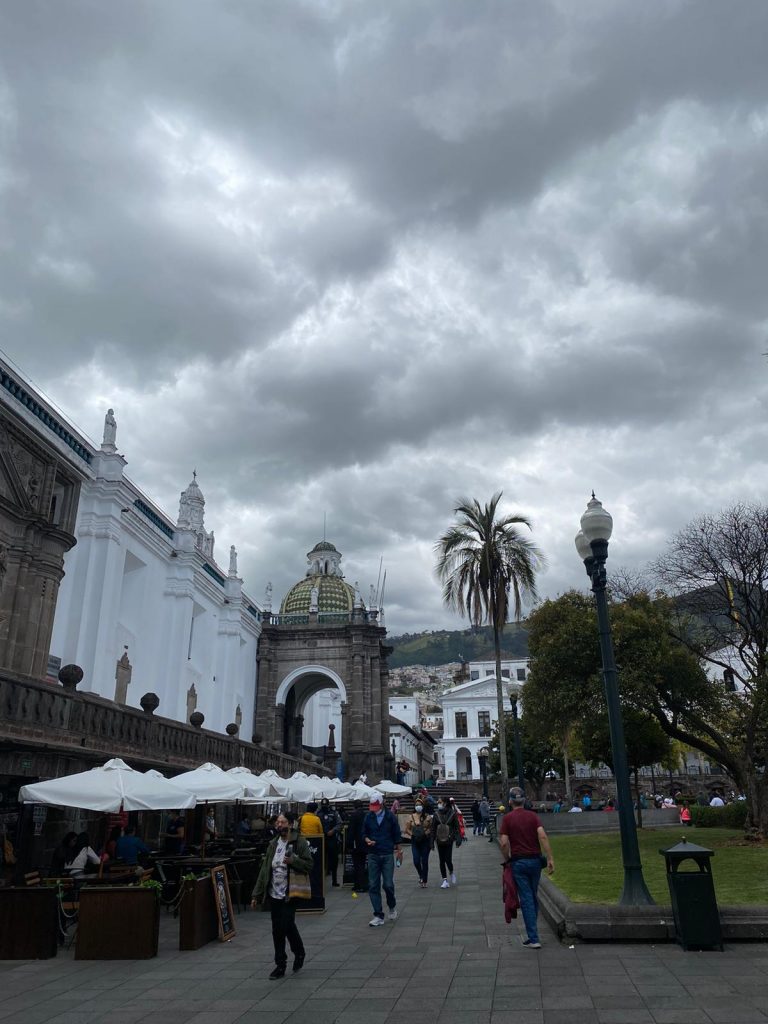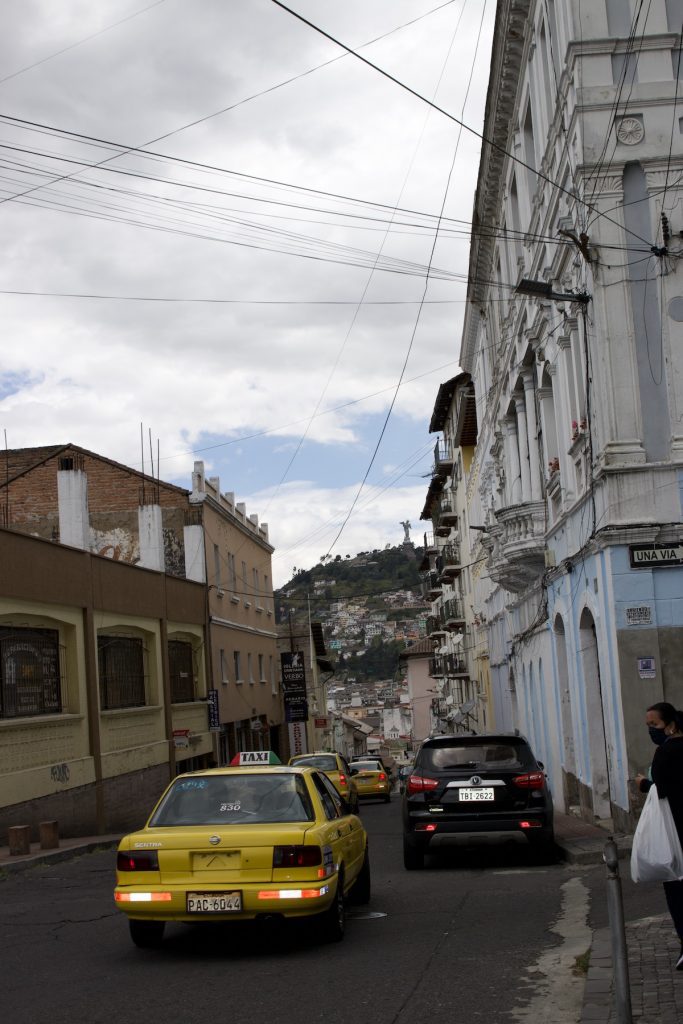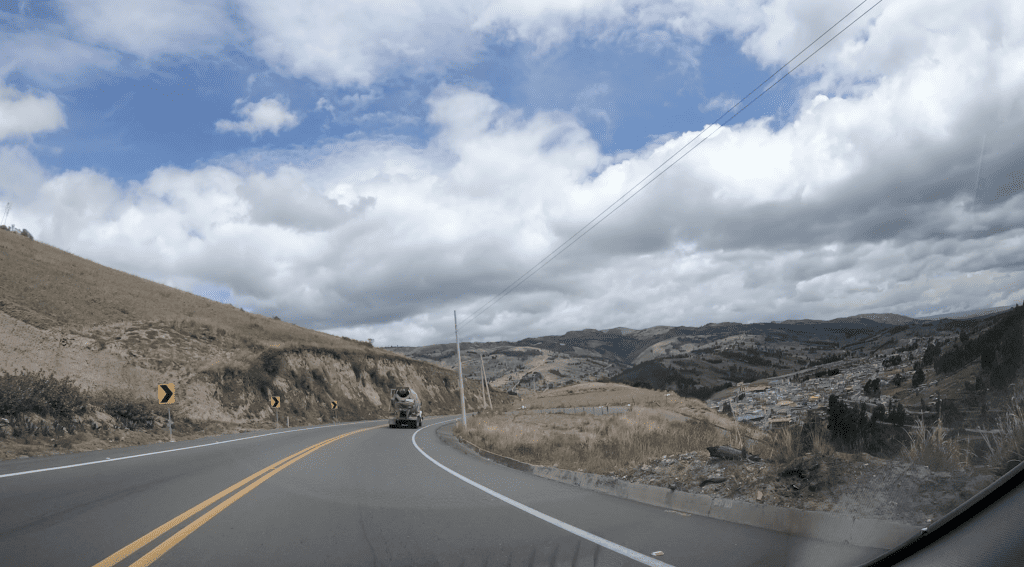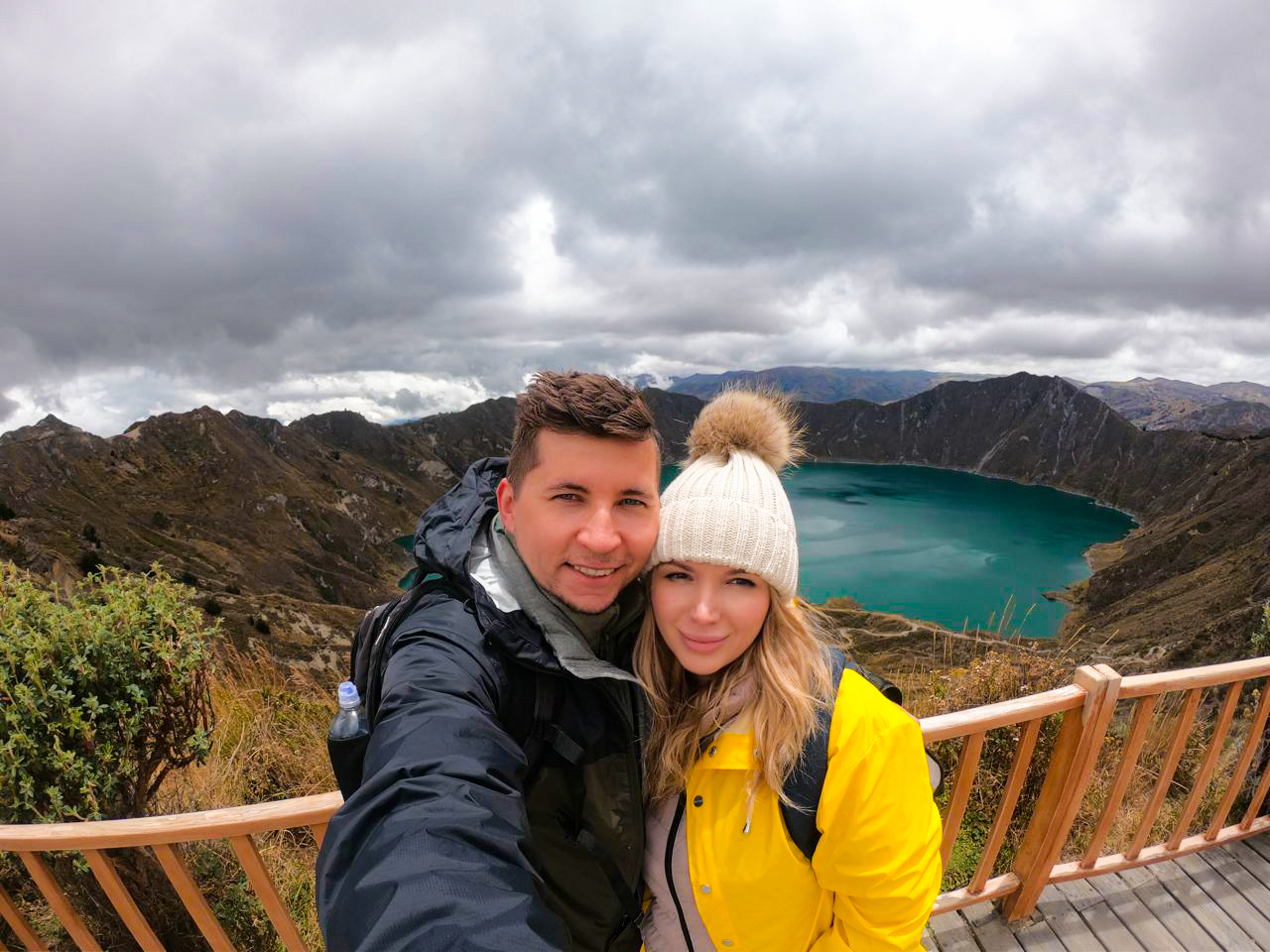How Safe is it to Travel in Ecuador?
Ecuador, located in Northwestern South America and sharing borders with Colombia and Peru, is relatively safe to visit despite issues like drug trafficking, minor theft, scams, and occasional violent attacks. However, the border region with Colombia is a designated no-go zone.
Natural risks, including earthquakes, volcanic eruptions, tsunamis, and severe weather, are also present. And for the adventurous, Ecuador’s wildlife adds an extra thrill—anacondas and other Amazon species can be intimidating.
Backpacking in Ecuador comes with its challenges, but it’s an experience that most travelers say is well worth it. Just ask anyone who’s been there; they’ll tell you how unforgettable the journey is.
Are Taxis Safe in Ecuador?
Taxis in Ecuador are generally safe, though they can be a bit unpredictable. Meters are rare outside of major cities. During our trip, we found meters in places like Quito, Baños, Cuenca, and Guayaquil. Otherwise, it’s common to agree on a price with the driver beforehand, though flat rates are typical. We never had any issues with taxis and found the process easy once we got the hang of it.
In Ecuador, we quickly learned to spot authorized taxis by looking for yellow cars with license numbers on the doors and windshields, especially in Quito and Guayaquil. In other areas, we looked for the orange license plates or the newer white plates with an orange stripe across the top.
While some taxis in the bigger cities have meters, we found that many didn’t. My wife and I made a habit of agreeing on the fare with the driver beforehand to keep things straightforward. For convenience and an extra sense of security, we sometimes used the Easy Taxi app, which worked like Uber by providing the driver’s name and a description of the car when booking—definitely helpful for peace of mind.
Is Public Transportation in Ecuador Safe?
Ecuador recently revamped its train lines, creating scenic tourist trains that travel through the Andean and Coastal regions. We found these trains perfect for safe, enjoyable day trips.
Buses are also a reliable way to get around, as long as you keep an eye on your belongings. They’re frequent, reasonably priced, and great for covering long distances. We did avoid city buses in Quito, though, as they tend to get very crowded.
For the adventurous, pickup trucks are an option, though they’re probably the least secure public transport. They run through rural and remote areas, and while they’re not the safest, they can be a fun choice if you’re up for a bit of thrill.
Crimes in Ecuador
Quito’s old town is truly beautiful, with parts designated as World Heritage Sites, making it a magnet for tourists. However, the crowds also attract pickpockets, so it’s essential to stay aware of your surroundings and keep a close eye on your belongings.
Since this area is one of the city’s poorer neighborhoods, it’s best to avoid visiting at night unless you’re with a larger group, a local friend, or on a guided tour. During the day, though, it’s a stunning place to explore and soak in the history.
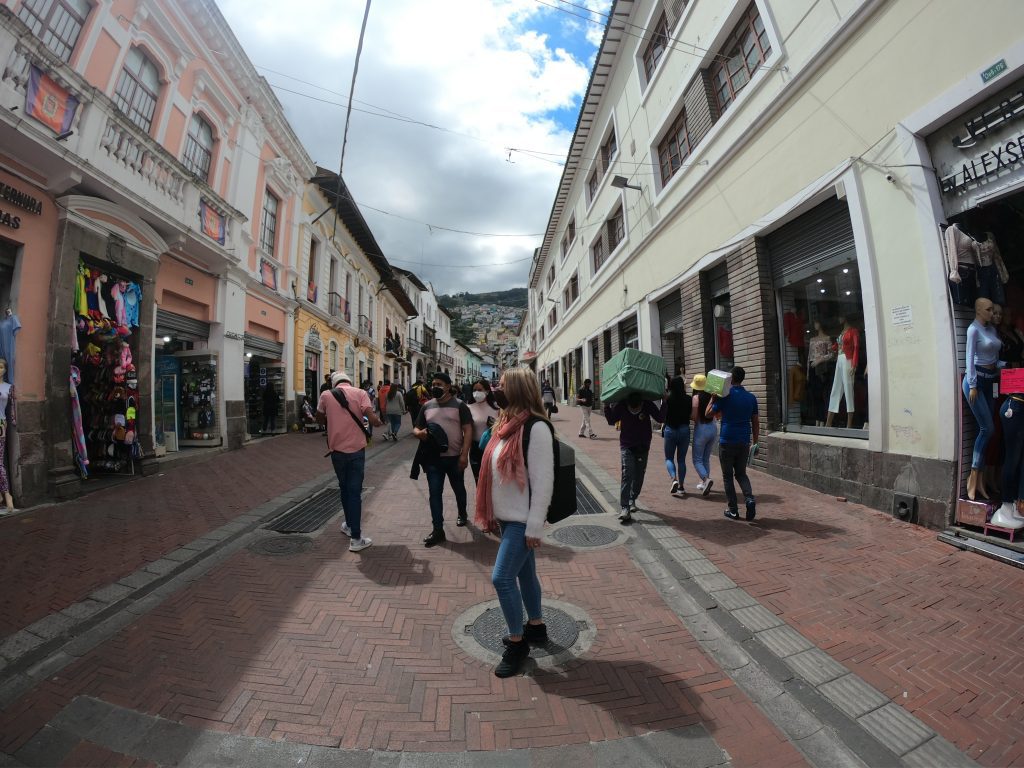
In the modern part of Quito, La Mariscal, it’s wise to stay cautious at night. Rather than walking back to your hotel, we recommend calling a taxi for peace of mind.
Pickpockets and petty thieves are common in transportation terminals, so keeping an eye on your belongings is essential. Quito’s tourist police are easy to spot and are there to help, so don’t hesitate to reach out if you need assistance or want to report a crime.
Petty crime, rather than violent crime, is usually the focus here. While the sight of a weapon can be intimidating, it’s typically used just to frighten the victim. Ecuador has a lower rate of violent crime compared to some other South American countries.
Guayaquil, however, can feel a bit more challenging. While it faces issues similar to Quito, petty crime is more frequent. Avoid poorer areas, especially El Guasmo, and exercise caution in downtown and southern parts of the city, as well as on public transportation.
Places to Avoid in Ecuador
While there are many beautiful and safe places to visit in Ecuador, there are some that you should avoid or take extra precautions when visiting.
The Colombian Border
Stay well away from this area—it’s simply not worth the risk. Most crimes happen here, and the last thing you want is to end up near a drug-related conflict during your trip. Thankfully, tourists typically have no reason to venture close, and access to this exclusion zone is nearly impossible for visitors, making it easier to avoid entirely.
Areas in Quito
As we’ve mentioned, pickpocketing and petty crimes are common in Quito, so it’s wise to be mindful of where you stay. A general rule for safety is to steer clear of areas with suspicious crowds, and avoid walking alone on dark, empty streets. Staying alert to your surroundings can make a big difference in having a safe and enjoyable visit.
Areas in Guayaquil
The riverfront in Guayaquil is generally safe for tourists, but there are certain areas in the city that are best avoided. Urban spots, especially downtown and southern areas, along with the El Guasmo district, are known for being less safe. When using public transportation, exercise caution and keep a close watch on your belongings, particularly after dark. Staying alert in these areas will help ensure a safer experience in the city.
Covid-19 Situation in Ecuador
According to Our World in Data, Ecuador has a fully vaccinated rate of 69.2% as of August 2022. Ecuador is willing to strengthen or relax entry requirements based on the current situation, with the various COVID variants emerging. Travelers should be adaptable and anticipate changes in entry requirements.
Ecuador Travel Requirements
Ecuador travel restrictions were updated on Aug 11, 2022, by the Ecuadorian government. All visitors to Ecuador over the age of three must present the following documents:
Plan perfect trip to Ecuador & Galapagos
I spent countless hours researching everything about traveling to Ecuador, and I created this blog for fellow travel enthusiasts who want the best, most reliable information. But if you want to save time, we’ve partnered with the top local agency to plan your dream trip.
- Proof of completed COVID-19 vaccination or
- Negative COVID-19 RT-PCR test result or
- Proof of COVID-19 Recovery, and
- Travelers Health Status Declaration Form
You may visit the Ecuador Ministry of Tourism website for more information about travel and health safety protocols.
Trust me, while safety precautions are important, knowing how to balance them with amazing experiences makes all the difference! Want an expertly planned itinerary that lets you explore Ecuador’s beauty while staying secure? Get a FREE quote from my recommended local agency. Your booking supports this blog and local Ecuadorian businesses.
Travel Safe in Ecuador
You can visit Ecuador’s cities safely as long as you take precautions.
- Chat with locals to learn about an area’s safety so you can identify and avoid dangerous areas.
- When you’re out on your own, use caution. Take a taxi if you are traveling late at night.
- Never leave a drink unattended, and never accept drinks from strangers. In Ecuador, drink spiking does occur.
- Avoid wearing expensive jewelry in crowded areas.
- Take no more cash than you need for the day.
- Take only one credit card, and consider opening a new credit card with a low limit for your trip to Ecuador; if it is skimmed, stolen, or you are the victim of express kidnapping, you will not lose your life savings.
- Hold on to your camera and keep it in a bag until you need to take a picture.
- Keep all bags and other valuables visible in restaurants and other public places.
- Make copies of important documents and credit card numbers.
- Always carry identification (it’s required by Ecuadorian law), but make it a photocopy of your passport, not the original.
- Do not forget to disinfect and follow health and safety protocols set by the government.
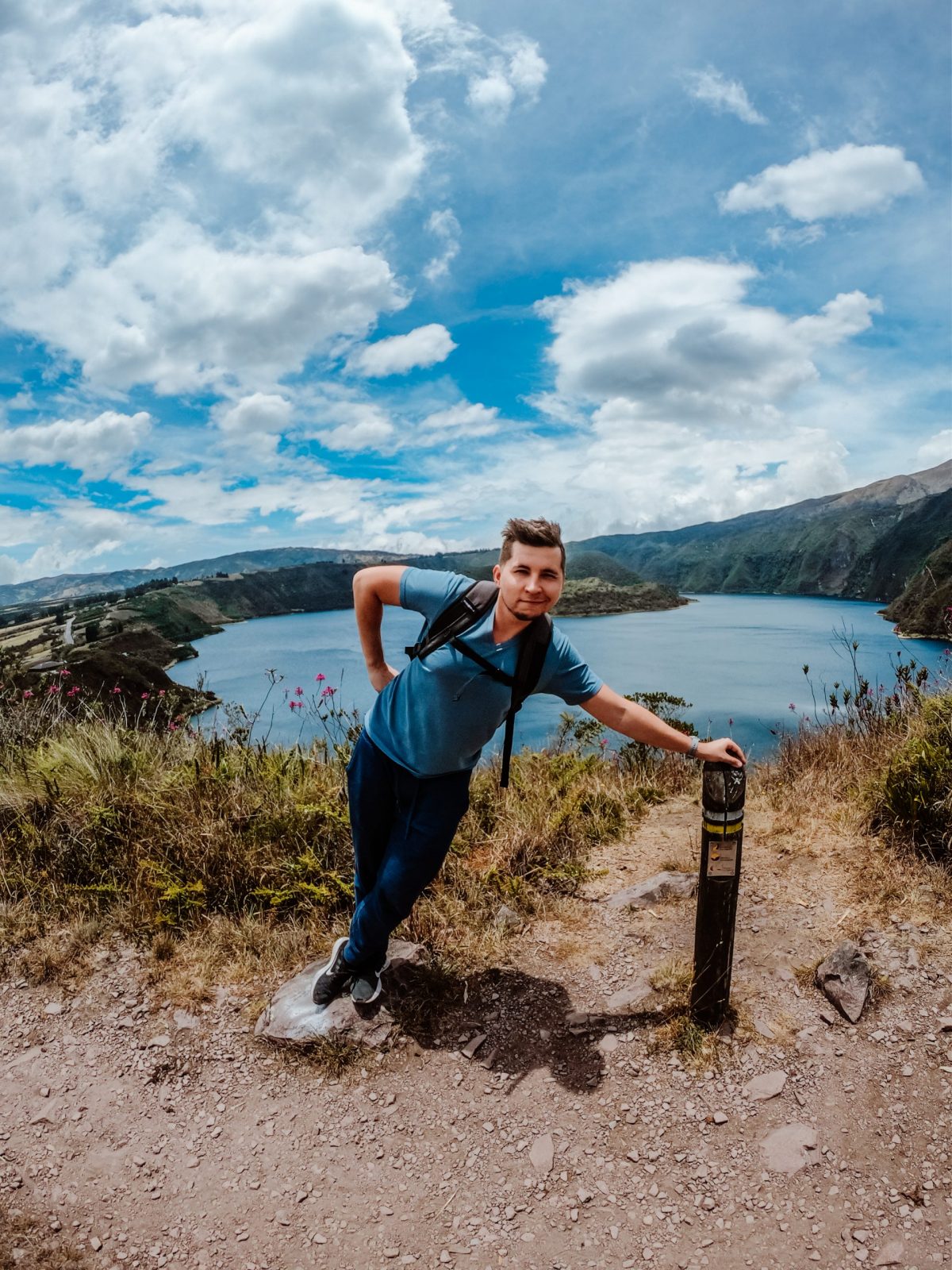
Planning trip to Ecuador?
My wife and I rented a car for 15 days and traveled from the northern part of Ecuador to the south, visiting amazing cities like Quito, Otavalo, Baños, Cuenca, and Guayaquil. Along the way, we explored iconic places such as Cotopaxi National Park, Quilotoa Lake, and many more breathtaking destinations.
Not many blogs cover traveling in Ecuador in detail, so I spent nearly three weeks creating this comprehensive Ecuador travel guide based on our trip. It’s packed with everything you need to know, and honestly, I consider it the best free travel guide about Ecuador out there.
If you’re planning a trip to Ecuador, don’t forget to use my link for discounted hotel prices through Booking.com. It’s a great way to support my blog while saving money on your accommodations!
Conclusion
Even with the occasional petty crime, Ecuador felt safe to us as long as we took basic precautions and stayed mindful of our surroundings.
At times, certain areas seemed a bit intimidating, but by staying aware and keeping a cautious eye on our environment, we felt secure throughout our visit.
Ecuador’s natural beauty made every moment worth it. From lush rainforests and towering mountains to pristine beaches, the country has so much to offer. We found ourselves captivated by the rich landscapes and the warmth of Ecuador’s indigenous culture—an experience we’ll always cherish.

